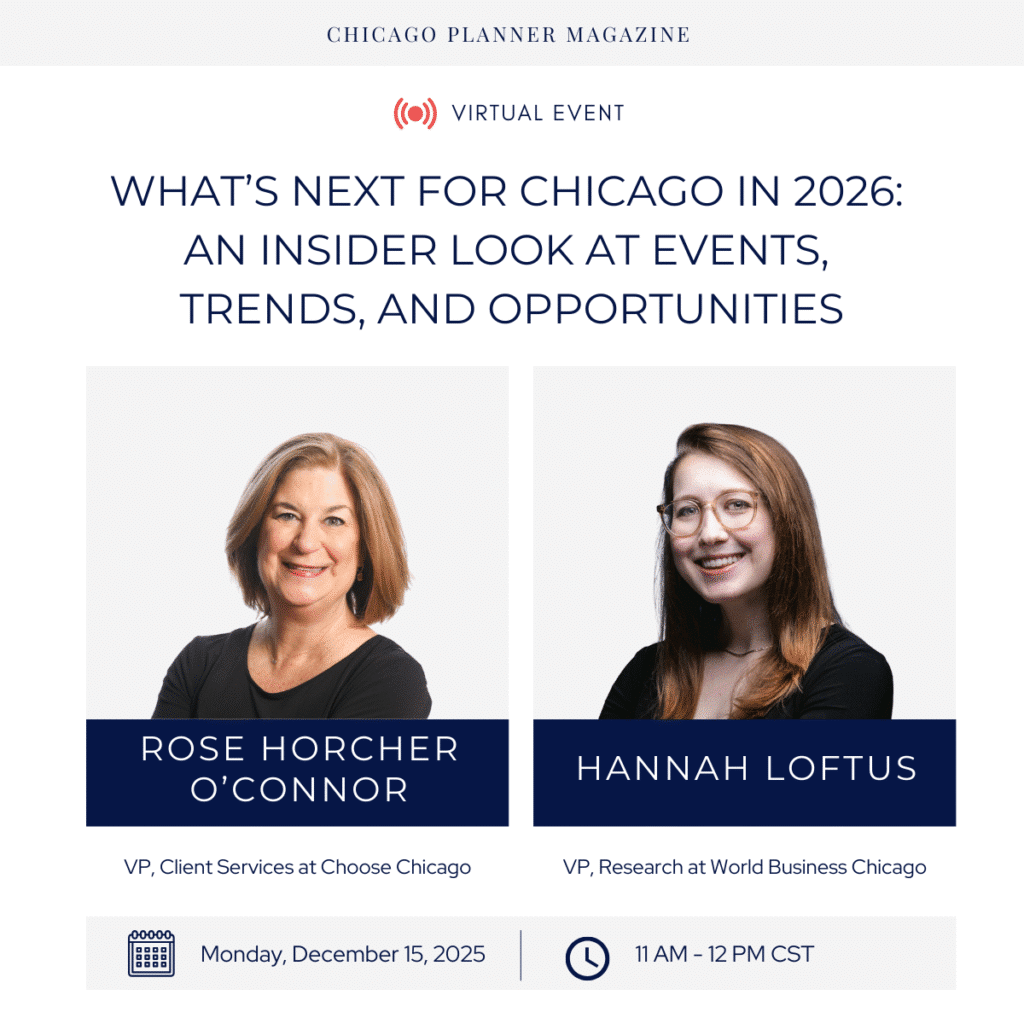
While many are reveling in the relief of vaccines, we have to acknowledge that the pandemic isn’t completely over. With the Delta variant causing increased concern – particularly for those at risk ranging from children to older adults, those with health conditions and suppressed immune systems, and unvaccinated individuals – it’s important to think about how to balance potential issues when planning for in-person events in the fall. Cancelling events is expensive, especially if deposits are lost, therefore it’s a planner’s job to have thought about these details and how they should be handled in a worst case scenario. The experience of the pandemic has been widely inconsistent – often resulting in political views being more impactful than protocols developed from scientists and health professionals. As a result, where people live tends to contribute heavily to the overall response and expectations involving requirements and standards around in-person activity.
The goal of this article is to acknowledge that we are in a time where most people are ready to be out and about as usual, however, not everyone is. This means that as a planner, you have to be ready to deal with the different positions of companies you may be working with, in addition to the various mental health stages of the individual people involved.
Personally, it has been very interesting as a Chicagoan to talk to friends in different geographic areas about their experience with vaccinations and masking up from a local, cultural perspective. In Chicago, some people still wear masks inside stores, with a large percentage of people not wearing them outdoors. However some places, including public transit, request masks for everyone. Speaking to friends in Indiana and other rural or more suburban parts of the Midwest, the sentiment has been that mask wearing is may be frowned upon because it means you haven’t been vaccinated, and of course there are also the political associations tied to both wearing and not wearing a mask. Then, for some of my west coast friends, they have explained that the act of wearing a mask is seen as either a political stance, or an act that shows you care about others, whether the person wearing the mask is vaccinated or not.
As a planner it is important to acknowledge that geography reflects individual reasonings behind mask-wearing and safety protocols, as it may play a role in how your client could approach any standards they may or may not want to put into place for your event.
In the United States, we cannot pretend that this is an easy subject, and it is important to reference the CDC guidelines in conjunction with state requirements when reviewing your approach to whatever policies you intend to enact. It is important to keep in mind that for larger companies, the guidelines may be based on different states, or nationwide company mandates, which could be more strict, especially if you are dealing with an international organization.
With all of this in mind, let’s break down a few categories to consider when determining your approach to developing your contingency plans and safety protocols for live events in the fall. The initial fork here is corporate events, trade shows and public-facing events versus social gatherings and weddings and other private activities. In this article, we will primarily focus on corporate-based events, and tradeshows, however much of this content can be considered for private and social functions as well.
Event Type & Guest Count
The type of event will impact guest count and what flexibility you have. If everyone needs to be present at the same time, spacing, layout and indoor/outdoor options will be your primary consideration – something that will be especially true for celebratory events such as weddings. For corporate events, trade shows or other public functions, additional options can be layered into the design of the event. Staggered start times, meet and greets, and group discussions all allow for smaller, yet impactful interactions that can still get to the heart of why you are gathering in person.
Understanding the intention of the event is a core piece to building an exciting yet safe experience. Ask yourself: is the goal to learn more information which could be done through activities like a panel discussion, listening to a keynote speaker, or participating in an educational course? Is the goal to network and interact? Perhaps demonstrating or educating your audience about a product? There are many creative ways to allow guests to network, meet one another and have a meaningful experience. For example, creating separated activations for smaller groups compartmentalizes the experience without having to eliminate the reason people want to meet in person in the first place: connecting. You can offer targeted networking experiences (ask attendees to fill out a brief survey about who they would like to meet and break up into different spaces based on responses), or you can integrate VIP experiences to create more value for those who want to be part of a truly fulfilling in-person event.
Building a plan around the goal of the event with safety and distance in mind means that you give yourself flexibility to stay within the rules, regardless of whether the COVID variant numbers increase.
Hybrid Option
While many people are happy to get back to being in person, others are still interested in attending virtually. By offering a hybrid event, you can expand your attendee list to those of all comfort levels, in addition to keeping the event available to those who might not normally travel to participate.
Offering a hybrid event is important to ensure that your sponsors are able to connect with more people, plus it will allow you to acquire a wider range of opinions and data about the event. It can even help you expand the types of speakers and interesting individuals you can incorporate into the event itself, particularly for conferences and educational sessions.
While many cite concerns of pricing for hybrid events, consider balancing out the costs with tiered ticket prices and different sponsor opportunities, and also look into venues that have built-in technology options. For hybrid events, it’s important to understand what will be the highlight of your in-person event so those who attend virtually can share in the excitement. Think about what you believe is the primary draw to your event. Is it an interactive portion, or a keynote speaker? Making sure the virtual experience feels just as exciting as the in-person experience ensures you have satisfied attendees and sponsors, who will want to work with you again.
Location & Venue
The location of your event is everything. Whether you’re looking for the newest venues to attract attendees, or outdoor options for larger groups, or tech-savvy spaces for hybrid events – having the right space is extremely important.
When looking at venues, be sure to talk through details such as building and staff policies around COVID, cleaning practices, and what the venue may expect from attendees. Most places are not requiring masks for vaccinated people, but understanding how a venue may expect you to work with them to ensure a safe environment for everyone will help you understand what you need to communicate to your client, attendees and sponsors. For example, some companies require health screenings while others take your temperature at the door, and of course, you could do both. Make sure to be very, very clear with your client and the venue about expectations, and who is responsible for managing required steps. If your client requires more precautions than the venue has in place, be certain that these details are also very clearly communicated to the venue and any vendors involved in the event. The goal of a successful event is making sure that everyone feels safe and that guidelines are clear and followed unanimously.
Safety Requirements
First and foremost, be sure to stay on top of CDC guidelines and what your local government instructs. Here is what Illinois has to say.
Understand what safety requirements are important to your client, and how you plan to enforce them. It may be useful to have a tiered plan outlined with your client, based on various levels of infection rates. If you choose to build in a tiered safety plan, only inform your attendees of the most strict version, so if it is deemed safer, you are lifting restrictions rather than adding them, and risking conflicts with potential sponsors and attendees.
Here are some common safety practices to consider when building your plan:
- Cleaning surfaces with bleach/disinfectant.
- Limiting the number of people in a space – keep in mind that this number needs to include staff, vendors and all people who will be in the room, not just attendees.
- Having hand sanitizer readily available.
- Wearing masks.
- Taking temperatures at the door.
- Health screening forms to be filled out prior to entry.
- Open windows and outdoor spaces.
Cancellation Policies & Contractual Obligations
The goal is to plan for a safe and successful event, however, it is important to fully understand the terms and policies required by all of your vendors, and the space you will be using. Since the pandemic began, many places have adjusted their policies on cancellations or move dates. Make sure that you and your client are clear on expectations should the need to cancel arrive.
The information presented in this article is meant to help you plan safely, but it is by no means an exhaustive list. Make sure you do plenty of research specific to your event, so everyone can stay safe while having a great experience!
Article written by Jessica Dalka – Twitter: @JessicaDalka | Instagram @ChicagoPlanner | linkedin.com/in/dalka




0 Comments